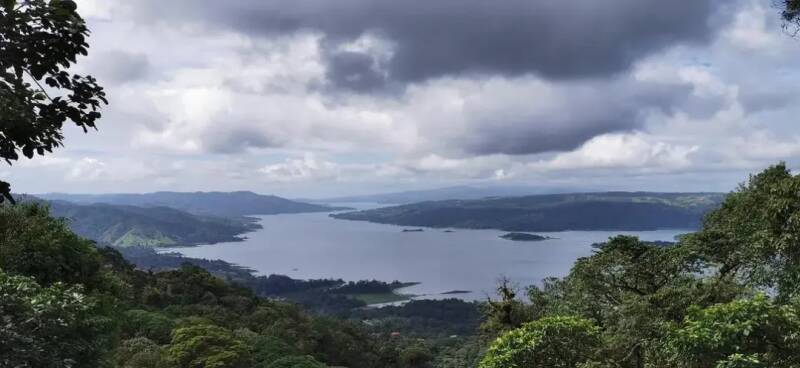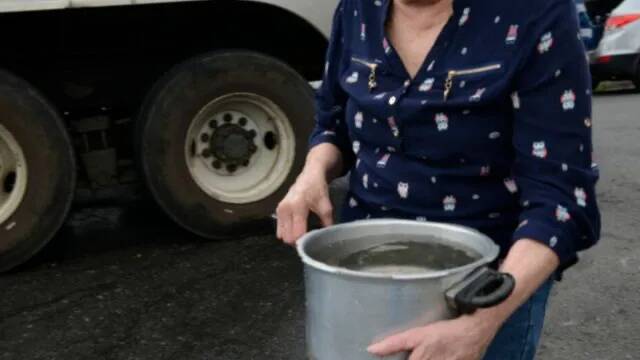Water pollution problem is serious! Many regions in Costa Rica lack water, and agricultural industries such as coffee are worried about future production
It is understood that Costa Rica is a country rich in water and geothermal resources, and Costa Rica also attaches great importance to agricultural development, is an important global exporter of pineapple, banana and coffee, and is very dependent on the use of water resources.

However, recently, there have been a lot of water crisis in Costa Rica. According to local media reports in Costa Rica, the Water Plumbing and Sewerage Authority (AyA) has had a budget implementation rate of only 48.8% in the past seven years (2017-2023), triggering a water supply crisis in many regions.
As early as January this year, water supplies in surrounding cities such as Moravia in the central part of the country were contaminated with xylene, and in February, places such as Hatillo experienced water shortages, and drinking water in several counties and cities was contaminated with hydrocarbons, and then in March, several cities have faced water supply suspensions. In response, AyA explained that it is the future transfer of water to areas where water shortages are more affected, so the suspension of water supply services is necessary.

However, hydrochemists in the country do not think so, and pointed out that Costa Rica is a country rich in water resources, so it is shameful to have so many water problems. It is believed that it is due to infrastructure problems, mainly long-term pipelines, such as serious aging and leakage, in addition, water shortage of seasonal reservoirs and lack of protection of water resources.
In addition, according to the estimates of the Costa Rican National Meteorological Institute (IMN), under normal circumstances, the average annual rainfall in the Balva County (Balva) region of Costa Rica is 4000 to 5000 mm, but a lot of water resources have been lost due to the insufficient capacity of the water tanks built.
In addition, the current problem of water pollution affects drinking water and agriculture, and the remedy for the problem of drinking water pollution is to use water tankers to supply water to contaminated areas for fear of discomfort after drinking it. In addition, the country's agricultural sector is concerned that when these xylene-contaminated water enters the soil, it will have a toxic effect on the soil and plants, damaging the soil ecological environment. In addition, La Nina weather is likely to come again in the second half of the year, which will lead to severe weather such as drought in Costa Rica, which may further aggravate the problem of water shortage and eventually affect the quality and yield of crops such as coffee.
In response, the President of AyA said that an "accelerated investment plan" was being developed for the construction and renovation of the water supply system, but that the funds currently available in AyA were still insufficient to immediately renovate the entire water supply system, mainly due to the loss of resources as a result of mismanagement by previous governments, which had limited funds and could only be resolved slowly.
Important Notice :
前街咖啡 FrontStreet Coffee has moved to new addredd:
FrontStreet Coffee Address: 315,Donghua East Road,GuangZhou
Tel:020 38364473
- Prev

Kenya| Introduction to Asalia coffee beans in coffee producing area
Kenya Kenya, Kenya, is fully known as The Republic of Kenya. It is located in eastern Africa, traversed by the equator, bordering Somalia, Tanzania, Uganda, Ethiopia and South Sudan, and bordering the Indian Ocean in the southeast. It has a land area
- Next

How to make the steamed burger bulge when rushing? What is the difference between lightly baked beans and deeply baked beans? What determines the fat of coffee beans?
When we make hand-brewed coffee, in addition to the deep powder pits exposed when the brewing is completed, the "burger" that expands rapidly when steaming is also a very healing sight. But often, steaming cannot produce a "burger" in many cases. Either the bulge does not protrude, or the flat surface is flat, or even the bottom surface is concave.
Related
- What ratio of water temperature and ground does the smart cup method use to press coffee? The difference between brewed coffee and filtered coffee?
- What is the standard process for the purpose of coffee cup testing? What is the difference between hand-brewed coffee and cup testing?
- How to use hand-brewed coffee paragon small golden balls? How does cold coffee lock in the aroma of coffee?
- Is American coffee black? What is the difference between American coffee and drip coffee?
- Unexpected! Well-known tea beverage brand Lele Tea will withdraw from the Zhengzhou market!
- Starbucks enters the fashion and beauty industry?! Netizen: Give me an ice American eye cream
- Why can American refills for free? The difference between Americano and American drip pot coffee
- Being chased out of the rain in front of Starbucks?! Store: Sheltering from rain under umbrellas poses a safety hazard
- The white moonlight has changed?! Lucky launches "Big Winter Pear American"
- Hand-brewed coffee three-stage method, high-sweet and universal brewing method to share! What does the high sweet water level of hand-brewed coffee mean?

